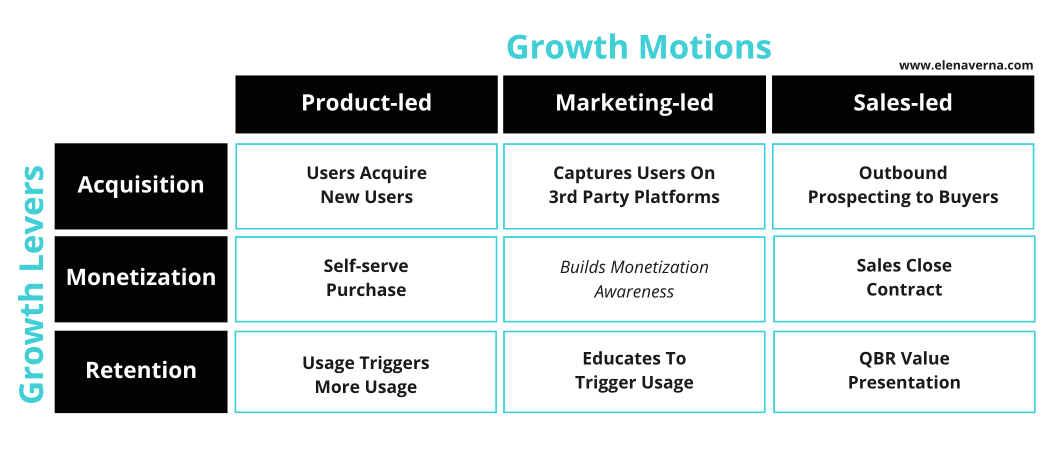Have you asked yourself if your company should invest in Product-led Growth motion? Sales-led Growth motion? How about Marketing?
But that is the wrong question to ask.
Not IF, but WHEN
You must play across all growth notions and levers to create a predictable, sustainable, and competitively defensible growth model. The question you should ask is not IF, but WHEN. Because if you don’t invest across all growth motions available, you leave a window of opportunity for competition to enter and disrupt.
Introducing: Growth Matrix
Growth can be visualized via growth levers x growth motions.
Growth levers:
Acquisition: How do you acquire?
Monetization: How do you monetize?
Retention: How do you activate and engage?
Growth motions:
Product-led growth: The product is responsible for the growth lever.
Marketing-led growth: Marketing is responsible for the growth lever.
Sales-led growth: Sales responsible for the growth lever.
Playing across ALL squares is crucial to long-term growth strategy. But due to t…
Keep reading with a 7-day free trial
Subscribe to Elena's Growth Scoop to keep reading this post and get 7 days of free access to the full post archives.



